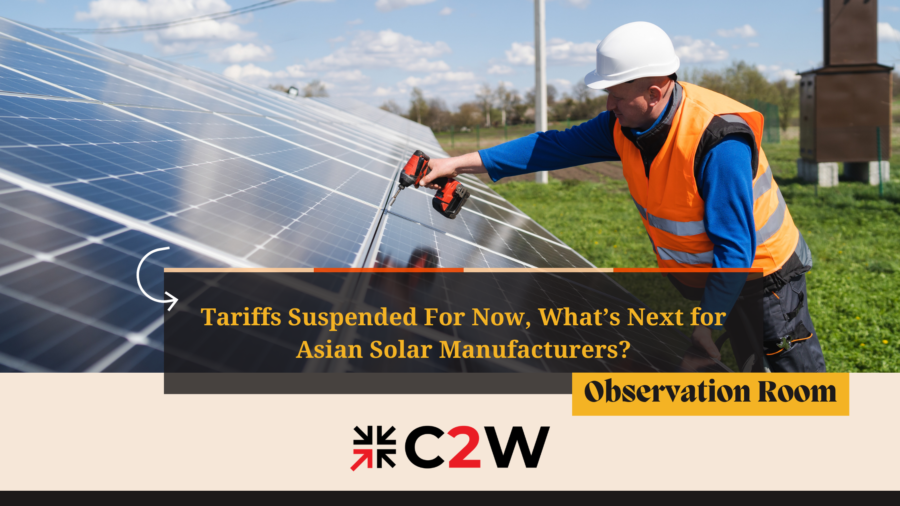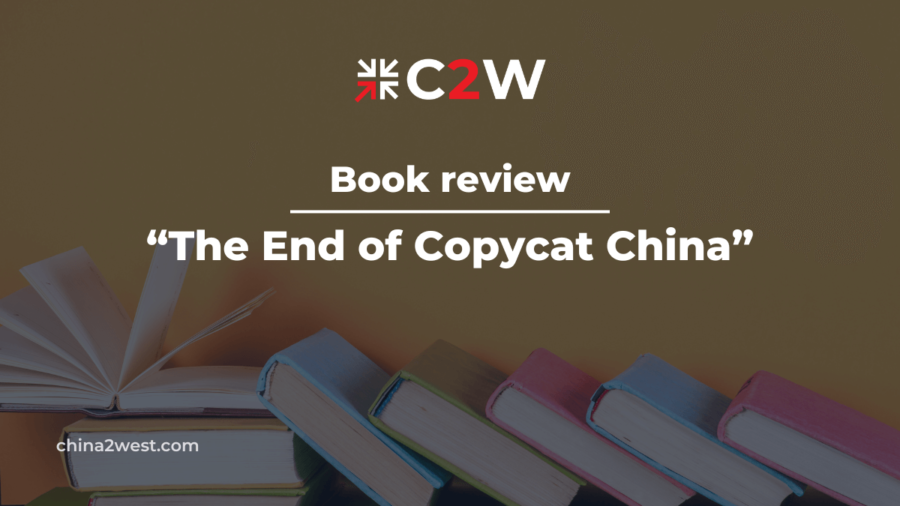Solar panel manufacturers in Asia can finally take a breath.
Early this month, the White House announced the tariffs imposed on solar panel imports from four
Southeast Asian countries, Cambodia, Malaysia, Thailand and Vietnam, would be paused for 2 years.
But the tariff suspension didn’t come as a surprise, despite the ongoing investigation, announced in late March this year, into whether China has been circumventing the current tariffs to export solar panels into the US through the four countries above, resulting from the inquiry filed by Auxin Solar, an American solar panel manufacturer based in California.
In the past two months, majority of, if not all, solar panel suppliers in Asia have held the shipment, awaiting the investigation results, in case of retrospective tariffs of up to 240% that can put this billion-dollar industry in jeopardy.
The American solar energy industry, relying on these four countries for 80% of solar panel supplies, reacted with aggressive lobbying against the probe, which has apparently paid off.
However, the waiver lasts only two years. What does the future hold for Asian solar manufacturers?
Asian Solar Manufacturers Still Targeted At A Policy Level, That Will Remain For A While
It is still too early to call it safe for Asian manufacturers, especially when Made-In-USA panels are federally favored.
Should the tariffs be imposed, it’d threaten over 100,000 solar industry jobs, and the majority of them are existing positions in installation and development. In the meantime, those jobs make up the largest percentage of the solar workforce in the US while only 13% in manufacturing.
But the current administration has also been under constant and immense pressures from domestic manufacturers of supporting American products ever since they took office, and the antagonistic trade relationship with China still needs a tariff as a leverage.
As a counterbalance, President Joe Biden has also invoked the Defense Production Act(DPA), the same law Donald Trump had used to authorize the acceleration of mask and medical equipment production to combat COVID during his term, in an attempt to uplift American solar manufacturing industry in the two-year window.
While the effects of the executive action still remain to be seen, it at least addresses on key issue against the manufacturing sector of this industry, demand.
With 80% of solar panels sold in the consumers market coming from the four countries and the tariff freeze, two years most likely won’t be enough to drastically increase the current market presence.
Federal procurement might be a new way out.
Although it is not an untapped market and the US government has a long history of utilizing the federal purchasing power to encourage certain industries, the solar industry wasn’t quite known for being one of the beneficiaries.
But demand created by the Biden administration’s climate goals have made federal procurement a very favorable option.
The executive action has specifically outlined the use of the federal procurement provisions, such as Buy American Act, which will secure stable and sizeable purchasing of solar products manufactured in the US.
Along with the investigation still going on, Asian manufacturers won’t be off the hook anytime soon.
Price And Capacity Will Still Be The Most Competitive Advantage of Asian Solar Panels
Nothing can beat a lower price, and that’s exactly why Asian manufacturers were still able to survive the first two rounds of tariffs targeting China.
America was once the leader of solar panel manufacturing, but the growing demand for solar power prompted many parts of the manufacturing process to be outsourced to China and Chinese multinationals in Southeast Asia for lower prices. It soon drove out American competitors of the market and has occupied the largest market share since then, which is the reason why sets of tariffs have been imposed since 2012.
But then, it fell into a paradox.
The Section 201, a 4-year-term tariff imposed in 2018 by Donald Trump, waived the duties for the first 2.5 gigawatts of imported cells to provide relief to companies that assemble their modules stateside, followed by the exemption for several types of modules as well. That resulted in the 80% of occupancy in the US market and over 50% of PV modules installed in 2020 being exempt from the Section 201.
That’s to say, the tariffs didn’t boost the domestic production as expected, and the strong reliance on parts from China for modules production in the US still exists.
Unbeknownst to many, the global prices for solar panels have been falling since 2018, when China, the then largest manufacturer of solar panels in the world, decided to reduce subsidies year by year on the solar manufacturing industry due to pressures of western tariffs and domestic overcapacity. Meanwhile, in order to promote cost-efficacy, China also laid out policies to encourage technology innovation.
Therefore, the price advantage of Asian solar manufacturing in recent years is seemingly not the product of the controversial state subsidization, but the result of industry advancement.
Besides, as the domestic demand for solar energy keeps expanding, the US solar manufacturing industry might still be able to only fulfill 10% to 20% of the demand, even if it ran in full gear. So even after two years, this reliance on imported panels will still linger for quite a while, which, in turn, will also likely further bring down the cost, enhancing the price advantage for Asia-made products.
In the foreseeable future, price and capacity will still remain as its biggest edge in the international market.
Don’t Underestimate The Role of Politics In This Game
It might be hard to rule out the possibility of partisan politics as one of the motivations resulting in this tariff exemption.
The Midterm is just right around the corner, with Joe Biden’s approval rates still being historically low.
This election season is looking very dire for the Dems, and not honoring your campaign promise can even cost you your base.
In this case, it’s the severely hindered progress of energy transition pushed by the Biden Administration, despite the Republicans’ harsh accusation of being soft on China.
Also, not only does he have to honor his campaign promise to save the base, but also the environmental communities have been major financial backers, especially during this election season.
That explains why the Biden administration seems more determined than his predecessors to reshape the current energy structure with his goal of increasing solar power for up to 40% of electricity supply by 2035.
The executive action also includes building strategic infrastructures including insulation, heat pumps, clean hydrogen and power grid to promote technological innovation to edge the US solar industry.
But this could also come at stake if the Republican became both the House and Senate majority at the midterm.
The recent debate between the US Trade Representative, Katherine Tai, and US Treasury’s Janet Yellen over China tariffs also gives the public a glimpse of the division of this issue even within the Biden’s cabinet.
With that said, we can anticipate more partisan and geopolitical politics as one of the most uncertain variables for the Asian solar manufacturers.
Maybe you find the economic landscape way too complicated to make a very informed decision now in terms of solar product manufacturing, but Asia, especially China and Southeast Asia, is still an option you can’t rule out given its presence in the global supply chain and cost-efficacy. But if you are in for a good ride for success in solar business, you can definitely use a guide with rich experience and expertise in the industry and Asia. C2W is the one. With 17 years of solar equipment manufacturing in the pocket, we have teams in both China and Southeast Asia(Thailand & Vietnam) with professional and bilingual design and engineering talents. Feel free to contact us if you are looking to know more!


